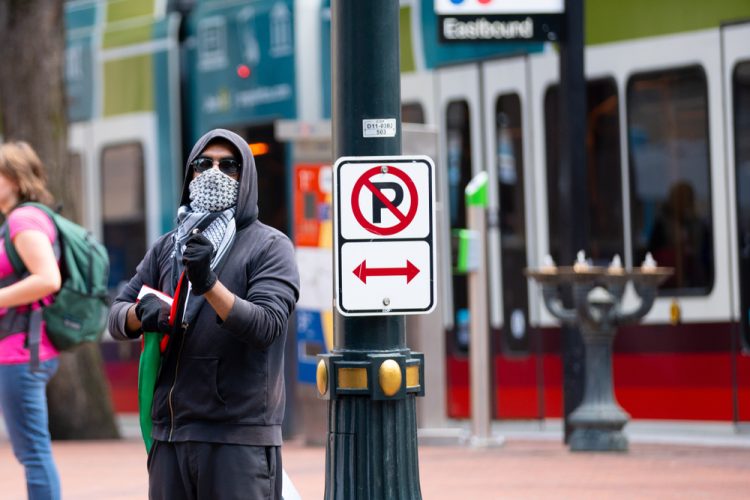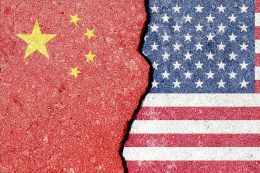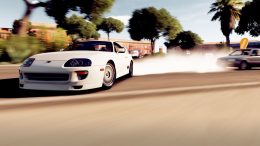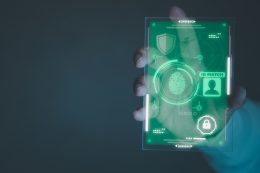The radical Left has been lying about Antifa for years.
They claimed it was just a loose network of anti-fascist protesters.
But Jesse Watters got one Antifa whistleblower to admit what everyone suspected about the terrorist organization.
Former Antifa member breaks his silence after Trump’s terrorist designation
When President Trump designated Antifa as a terrorist organization on September 17, it exposed years of lies from the radical Left establishment.
For years, politicians from the Democrat Party and their media allies insisted Antifa was nothing more than an idea or a loose collection of anti-fascist activists.
Now a whistleblower is confirming what conservatives always suspected about this dangerous network.
Jesse Watters interviewed a former Antifa member going by "Eric" who spent ten years inside the organization before getting out.¹
Eric wore a face mask to protect his identity but revealed disturbing details about how Antifa really operates behind the scenes.
When Watters asked whether the organization’s ideology was "full blown communism," Eric confirmed that much of it was, explaining that Antifa embraces "accelerationism" – the belief that radical change must happen immediately rather than through what he called "the slow march to the institutions."
Antifa’s recruitment machine targets vulnerable teenagers
Eric’s story exposes the sinister way Antifa builds its ranks.
Eric revealed he was brought into the terrorist organization as a high school freshman – targeting him when he was just a vulnerable kid searching for acceptance.
The recruitment pitch wasn’t about political ideology at first.
"You might get into it, say, because you don’t like bigotry in the music scene," Eric explained to Watters.²
But after young people get hooked, the organization shows its true colors.
Eric described how violence became a bonus of membership while his primary role focused on bringing other young people into the network.
By the 1999 Seattle riots, Eric said he was "ready to go" with what he described as "little Molotov cocktails in my bedroom and a copy of the Anarchist Cookbook that I had photoshopped or photocopied at the time from a friend of mine’s older brother."
Eric admitted that at the time, he thought "this is just a good time," but explained how members get drawn deeper into the radical ideology, eventually "becoming like a full-blown anarcho-communist and syndicalist."
California Antifa cells brought enforcement and intimidation
Eric explained what drove him away from Antifa around 2014-2015 when more aggressive cells started moving up from California to Seattle and Portland.
These California cells brought aggressive enforcement tactics that completely changed how the network operated.
"They were much more like, ‘Hey, you better get in line with this,’ and if you’re not, there’s consequences and there’s pressure," Eric told Watters.³
Eric’s account exposes how Antifa keeps its members in line through intimidation and social pressure.
"Oh, not only that, but there was pressure, there was ostracization, things of that nature," Eric told Watters when asked about being forced to take violent action.
The former member described how the group evolved from his initial involvement – when he might join "because you don’t like bigotry in the music scene" – to demanding complete ideological conformity.
"And then later on, it’s, ‘You’re gonna adhere to these tenets, and you’re gonna say and think these ways,’" Eric explained. "And if you’re on the fence at all, ‘Silence is violence’ and, ‘Your comrades are gonna become a problem for you.’"
This reveals how organized terrorist networks operate, not the behavior of grassroots protesters.
Trump’s crackdown forces the truth into the open
Here’s what Eric’s revelations really tell us about President Trump’s Antifa designation.
The whistleblower confirmed what anyone paying attention already knew. Antifa isn’t some loose collection of anti-fascist activists. They’re Communist revolutionaries with a recruiting playbook that targets kids and enforcement mechanisms that silence dissent.
Eric’s timeline is particularly damning. When California cells moved north around 2014-2015, they brought muscle and intimidation tactics that transformed the entire operation.
Compare this to how politicians from the Democrat Party described Antifa during the 2020 riots. They called it an "idea" while cities burned and federal buildings came under attack from organized groups with clear command structures.
President Trump’s decision to deploy troops to Portland makes perfect sense when you understand what Eric witnessed firsthand. These aren’t spontaneous protests – they’re coordinated operations by people who’ve been planning violence since they were teenagers.
The timing of this whistleblower’s interview isn’t coincidental either. Trump’s terrorist designation has former members feeling safer about speaking out against an organization that threatens its own people for questioning tactics.
What’s particularly revealing is Eric’s description of ideological enforcement. Any member who shows hesitation gets branded with "silence is violence" and faces retaliation from their own comrades.
That’s not activism – that’s how cults and terrorist cells maintain discipline and prevent defections.
Eric walked away after a decade because he could see where this trajectory was heading. The American people are fortunate that Trump acted before Antifa’s violence escalated even further.
¹ Hailey Gomez, "Antifa Whistleblower Shares What Made Him Quit After 10 Years," Daily Caller News Foundation, October 3, 2025.
² Ibid.
³ Ibid.
















